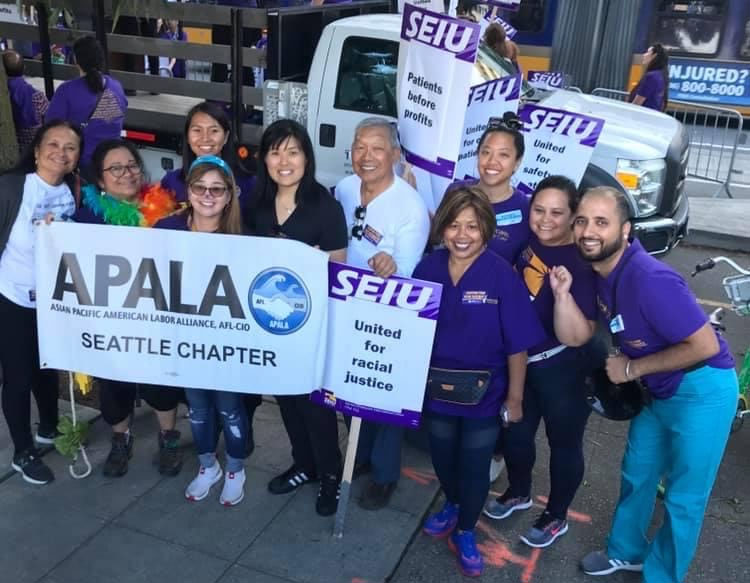OPINION
Celebrating three generations of Filipino labor leaders
As Filipino American History Month draws to a close, let’s remember these unsung heroes
By CINDY DOMINGO
(Oct. 30, 2020) — The first Filipinos came to the United States in 1587 on a Spanish galleon ship landing in what is now Morro Bay in California. However, it would not be until after the Philippine-American War, the first U.S. war abroad at the turn of the 20th century, that Filipinos began coming to the U.S. in large numbers.
Over the last 100 years, Filipinos have played an important role in the U.S. economy, contributing significantly to the agricultural, salmon canning, hotel and restaurant industries and, since the 1960s, the healthcare industry. During World War II, Filipino servicemen, both in the U.S. Army and Philippine Scouts, courageously fought on the front lines in the Philippines, playing an important role in the U.S. winning the war in Asia.
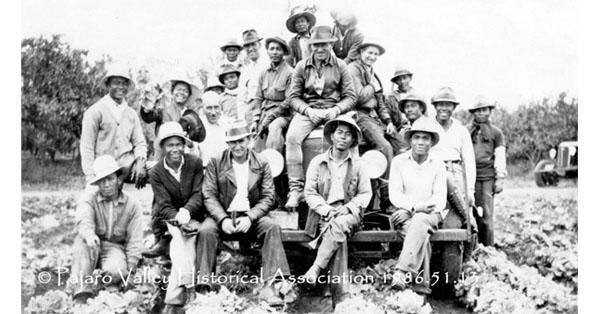
Filipino farm workers in Pajaro Valley, near Watsonville, Calif., September 1939.
(Photo by Mary Oliver/Pajaro Valley Historical Association)
This largely unknown history is why October was declared Filipino American History Month in 2009, and as we close this celebration, I’d like to briefly highlight three generations of labor leaders who have contributed to the development of the U.S. labor movement.
The first generation of Filipino trade unionists became leaders in the multiracial organizing of migratory workers in the agricultural sector and the salmon canning industry from the 1920s through the 1960s. Larry Itliong, Philip Vera Cruz, Chris Mensalves, Sr. and Pete Velasco were the leaders who helped to form the Alaska Cannery Workers Union Local 37, now affiliated with the Inlandboatmen’s Union and the United Farm Workers.
As documented in the film by Marissa Aroy, The Delano Manongs: Forgotten Heroes of the United Farm Workers Movement, Larry Itliong led Filipino grape pickers organized under the Agricultural Workers Organizing Committee on strike on Sept. 8, 1965. One week later, after Itliong made a plea to the Mexican farm laborers, Cesar Chavez and his National Farm Workers Association joined the Filipinos on the picket lines and eventually the two labor organizations merged to form the United Farm Workers (UFW). It took five years and a successful national grape boycott to bring the grape growers to negotiate a contract with the UFW. The militant and leading role of Filipinos in the well-known ’60s grape strike has long been overshadowed by Chavez and his Mexican rank-and-file members.
It was the second generation of Filipino American labor activists and historians who brought to light the history of the manongs. (Manongs is a term of respect for the older generation.)
Silme Domingo and Gene Viernes were the sons of the first generation of manongs, working side-by-side with their fathers in the Alaska canneries. They represented a new generation of cannery workers who were college-educated, but went to Alaska to earn quick money for school. Politicized by the civil rights movement, Vietnam War and student protests, students like Domingo and Viernes took on the oppressive and antiquated system in the canneries that was likened to the segregation and discrimination of the plantation economy in the South by the late U.S. Supreme Court Justice Harry Blackmun. Together, Domingo and Viernes and others including Nemesio Domingo, Jr., the eldest Domingo brother, filed three companion class-action lawsuits against the canning industry, successfully winning two of the largest monetary amounts of that time for migratory workers and ending segregation in the mess, housing and employment practices in the Alaska canneries.
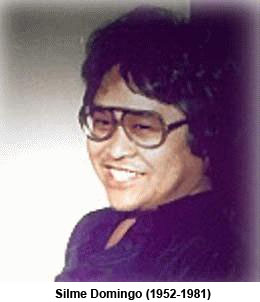
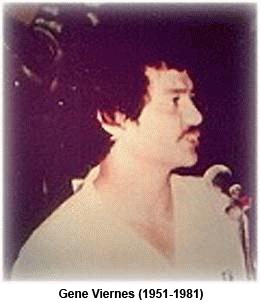
However, Silme Domingo and Gene Viernes, would pay with their lives when they sought to build solidarity between workers in the ILWU and workers in the Philippines who were facing repression under the Philippine dictator Ferdinand Marcos – a principal they had learned from Chris Mensalves, Sr and others in the ILWU from the manong generation. On June 1, 1981, Domingo and Viernes were assassinated in their offices in Seattle’s Pioneer Square in broad daylight. Eight years later, under the leadership of the Committee for Justice for Domingo and Viernes, deposed Ferdinand and Imelda Marcos were found liable for the murders and were ordered to pay the families $23.5 million. (Learn more by watching One Generation’s Time: The Legacy of Silme Domingo and Gene Viernes or reading Summary Execution: The Seattle Assassinations of Silme Domingo and Gene Viernes.)
Today, a new generation of Filipino labor leaders, organizers and rank-and-file members are carrying out the role of organizing Filipinos in the labor movement. Since the 1965 U.S. immigration reforms, Filipinos have become the second largest Asian American grouping in the U.S. and the largest population of Filipinos outside of the Philippines. Filipinos are prominent in the leadership and ranks of SEIU, UNITE HERE, AFSCME, ILWU and the Asian Pacific American Labor Alliance (APALA) Chapters and National Board.
The COVID-19 pandemic has cast an important light on the Filipino healthcare workers including nurses, doctors and environmental service workers. Recent statistics show that Filipino nurses represent 4% of the nurses in the U.S. but represent 31.5% of the 205 COVID-19 deaths. In California, about 20% of nurses identify as Filipino and account for nearly 70% of 16 COVID-19 related deaths. With such disproportionate numbers of deaths for nurses alone, the Filipino community and the labor movement must come together to demand protection of these frontline workers in the healthcare industry as well as in the hospitality and public service sectors.
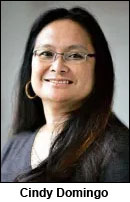 Cindy Domingo is a member of the Asian Pacific American Labor Alliance (APALA), Seattle Chapter. She is co-editor of A Time to Rise: Collective Memoirs of the Union of Democratic Filipinos (KDP).
Cindy Domingo is a member of the Asian Pacific American Labor Alliance (APALA), Seattle Chapter. She is co-editor of A Time to Rise: Collective Memoirs of the Union of Democratic Filipinos (KDP).

